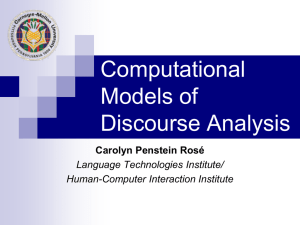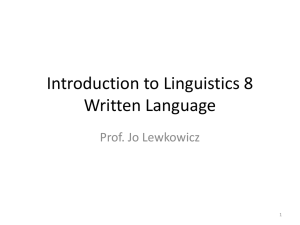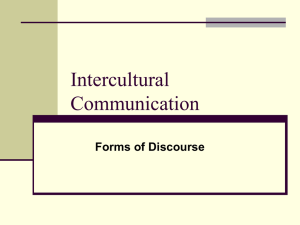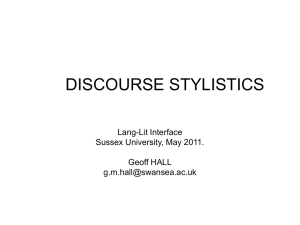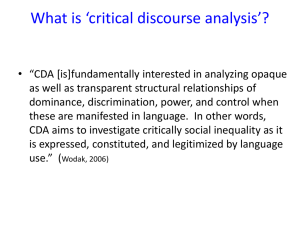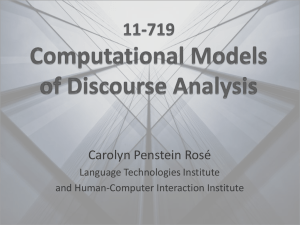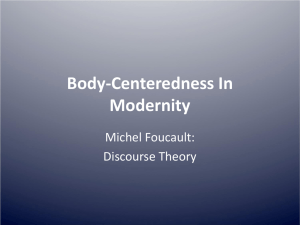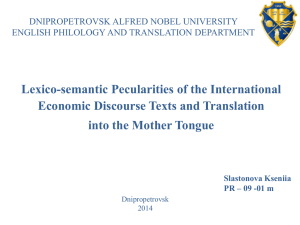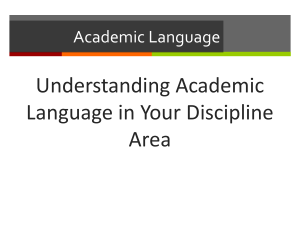ppt slides - Gerry Stahl
advertisement
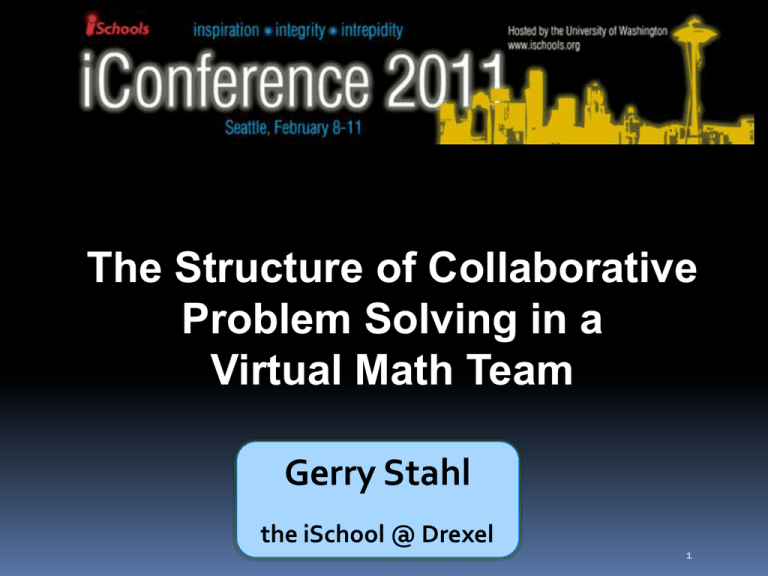
The Structure of Collaborative Problem Solving in a Virtual Math Team Gerry Stahl the iSchool @ Drexel 1 How does cognition take place (and how can it be analyzed) in a socio-technical setting? 1. Cognitive accomplishments are achieved by small groups, mediated by technological media, tools, resources 2. They can take place primarily in textual discourse 3. Research can capture adequate traces of meaning making, problem solving, knowledge building, group cognition 2 Social construction of mathematical meaning through collaboration and argumentation 1. The hierarchy of levels of temporal structure for online collaboration 2. The sequential structure of collaborative math discourse 3. Virtual Math Teams case study 4. 10 discourse moves (in detail) 5. Group cognition in math 3 Hierarchy of structural layers 1. Group event: E.g., Team B’s participation in the VMT Spring Fest 2006. 2. Temporal session: Session 4 of Team B on the afternoon of May 18, 2006. 3. Conversational topic: E.g., determining the number of sticks in a diamond pattern. (A longer sequence.) 4. Discourse move: A sequential accomplishment built on an elementary interchange. 5. Adjacency pair: A base interaction involving two or three utterances, which drives a discourse move. 6. Textual utterance: A text chat posting by an individual participant, which may contribute to an adjacency pair. 7. Indexical reference: An element of a textual utterance that points to a resource in the context. 4 “Longer sequences” in CSCL The sequential structure of collaborative math discourse The problem of longer sequences Between CA (conversation analysis) and DA (discourse analysis – e.g., Gee) Between utterances or adjacency pairs & identity or ideology issues Science of small-group cognition between individual unit of analysis & communities of practice 5 “Longer sequences” in CA Conversation Analysis (CA): Sacks (1962), Schegloff (2007), etc. looks at how people construct their interactions, e.g., with turn taking and adjacency-pair responses Traditionally focused on adult, American, face-to-face, informal speech Needs to be adapted to online text Needs to be extended from adjacency pairs to longer sequences that accomplish cognitive tasks by groups 6 The VMT environment 7 Case study topic 8 Select a problem 9 Decide to start 10 Pick an approach 11 Identify the pattern 12 Seek the equation 13 Negotiate the solution 14 Check cases 15 Celebrate the solution 16 Present a formal solution 17 Close the topic 18 Group cognition in math: The sequential structure The sequential structure of collaborative math discourse? Longer sequence is 10 discourse moves, each built on an adjacency pair Together, they accomplish group cognitive problem solving Structure of collaborative knowledge building: longer sequence of discourse moves, each at the group (interactional) unit of analysis 19 Group cognition in math: The longer-sequence structure Log 1. Open the topic Log 2. Decide to start Log 3. Pick an approach Log 4. Identify the pattern Log 5. Seek the equation Log 6. Negotiate the solution Log 7. Check cases Log 8. Confirm the solution Log 9. Present a formal solution Log 10. Close the topic 20 Group cognition in math: the learning (knowledge building) The group solved a math problem that had eluded the larger group and that another group had gotten wrong They did this through a longer sequence of 10 interactional discourse moves Each move was a mundane (everyday) practice of discourse The problem solving took place in the discourse, not in private mental space Knowledge building could be observed and analyzed in detail Math facts and procedures were not the focus (happened “between the lines”) 21 Meaning making Details of how the group co-constructs meaning: The symbolic expression “4n2” as meaningful to the group Analyzed from traces of the participants’ perspective (ethnomethodology) Multi-modal movement: visual reasoning, narrative description, symbolic abstraction 22 Analysis of group cognition First detailed analysis of a “longer sequence” Showed how it is a sequence of discourse moves each built on an adjacency pair Shows how the group – as a group, not as an expression of individual mental acts – accomplished problem solving in a sociotechnical environment An example of a microanalysis of group cognition in an online team of students discussing math 23 For Further Information: “Group Cognition” (2006, MIT Press) “Studying Virtual Math Teams” (2009, Springer) *** now in paperback *** This paper: GerryStahl.net/pub/iconference2011.pdf These slides: GerryStahl.net/pub/iconference2011.ppt.pdf website: GerryStahl.net email: Gerry@GerryStahl.net
